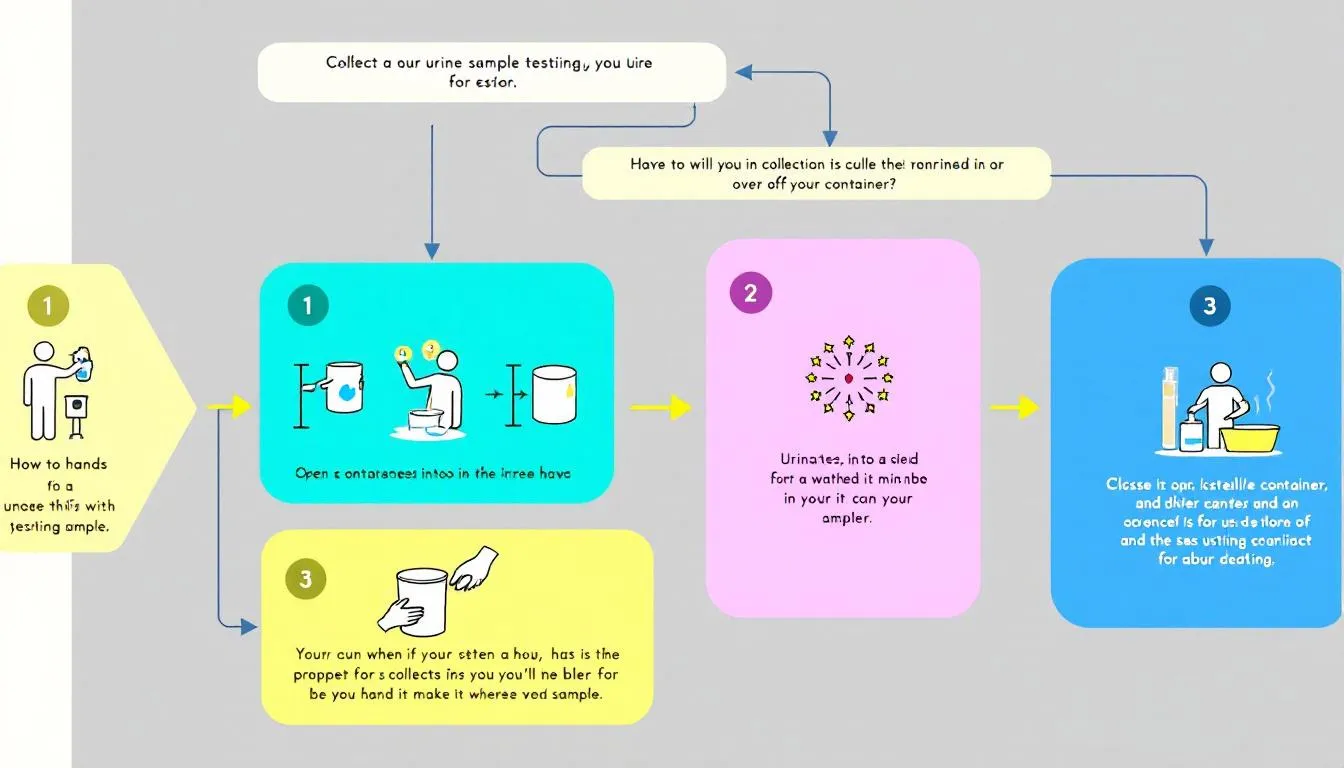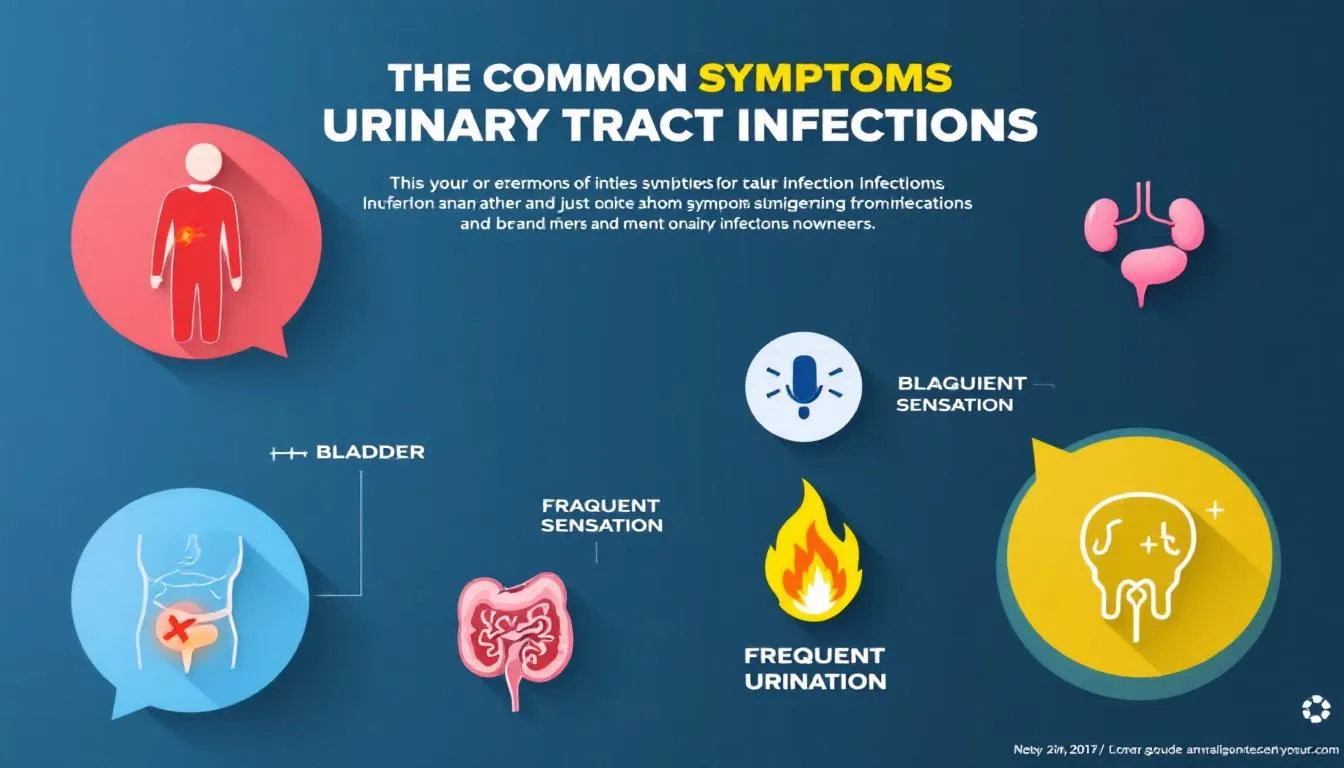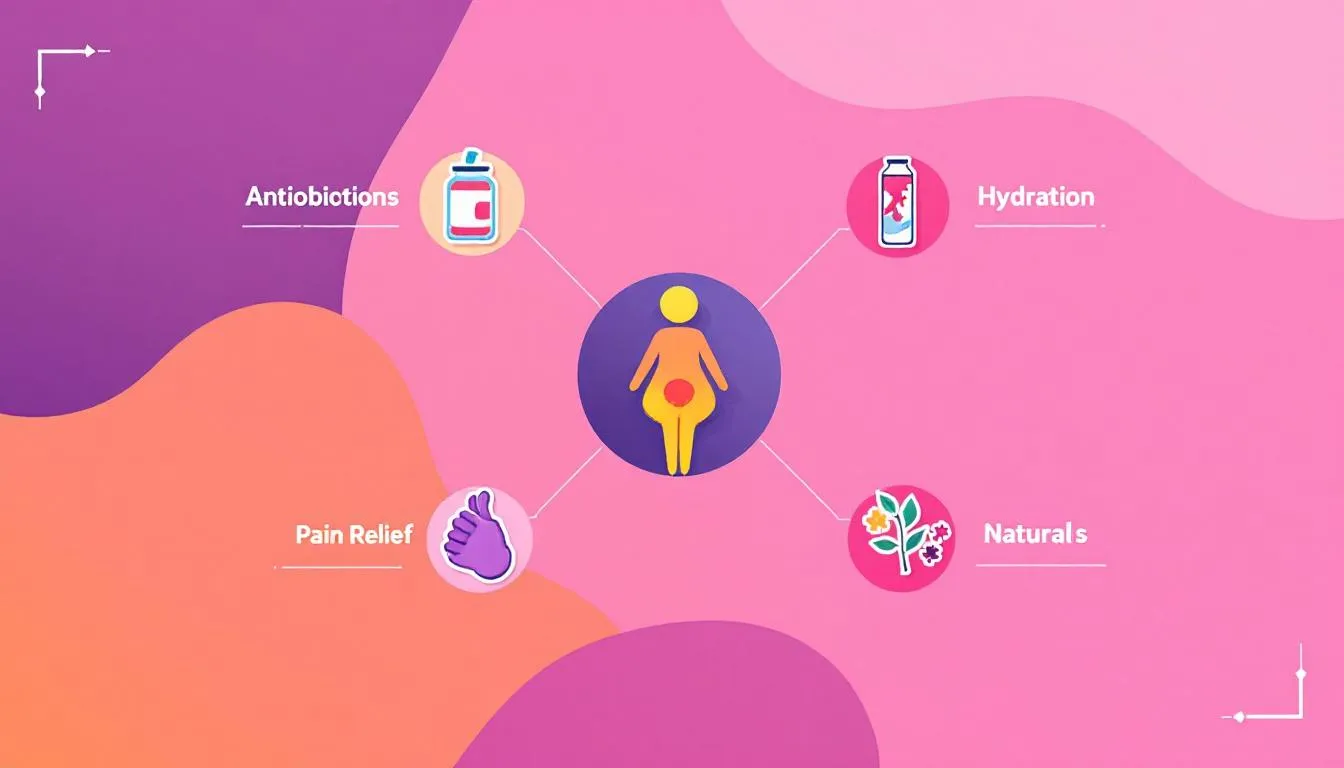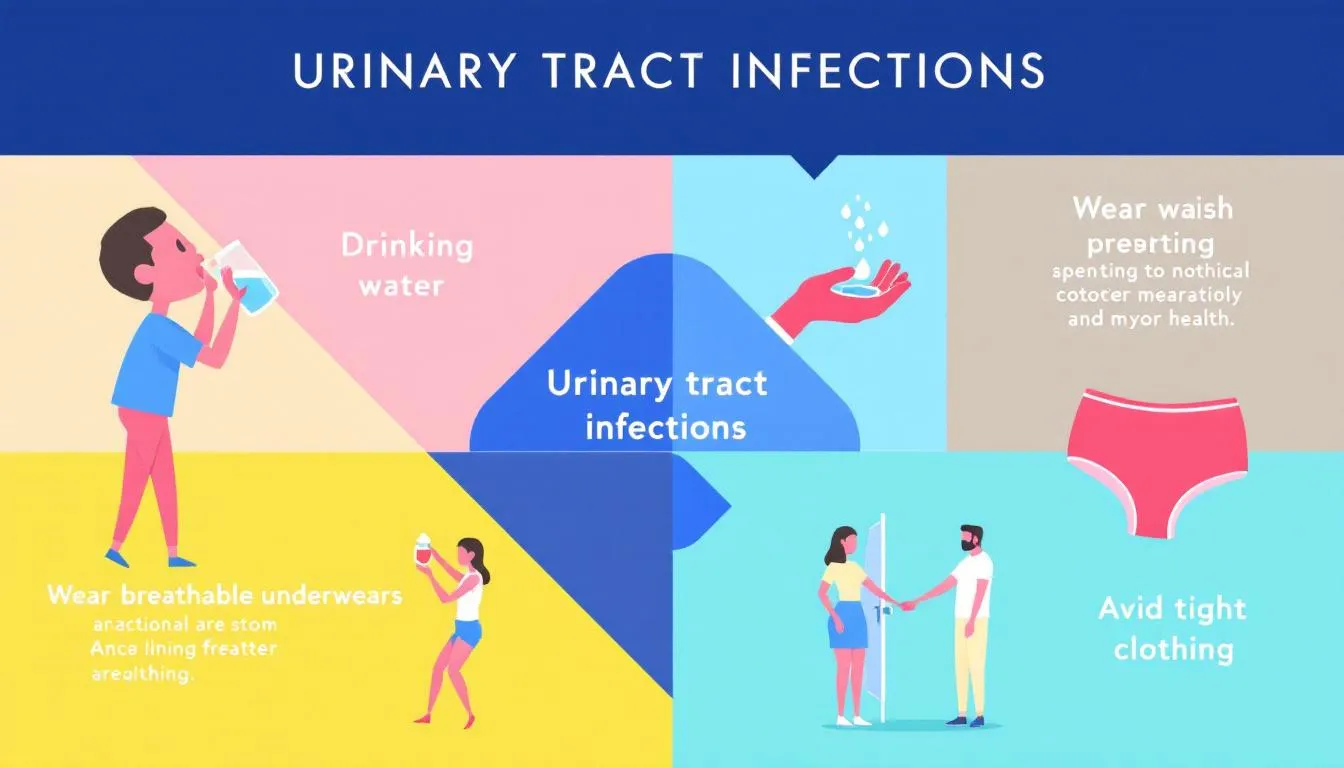A UTI urine test is crucial for diagnosing urinary tract infections. If you’re facing symptoms like frequent urination or a burning sensation, this test can confirm the presence of a UTI. This article covers the types of urine tests, how to collect samples, and interpreting the results.
Key Takeaways
- Urine tests, including dipstick tests, urine cultures, and microscopic examinations, are essential for accurately diagnosing UTIs and determining effective treatment.
- Correct urine sample collection and interpretation of test results are crucial for diagnosing UTIs and preventing unnecessary antibiotic treatments.
- Preventative measures such as maintaining hygiene, increasing fluid intake, and timely medical consultation can significantly reduce the risk and complications of UTIs.
Understanding UTI Urine Tests

A urinary tract infection (UTI) is an infection caused by bacteria entering the urinary tract, leading to symptoms such as painful urination and frequent urges to urinate. Healthcare providers often rely on urine tests to diagnose a UTI, confirming the presence of bacteria and determining the appropriate treatment.
Urine tests are a cornerstone in diagnosing UTIs. They involve assessing symptoms and collecting urine samples for analysis. Different types of urine tests include:
- Dipstick tests
- Urine cultures
- Microscopic examinations These tests are used to detect bacteria causing the infection and to assess antibiotic sensitivity. They help healthcare providers make informed decisions about the most effective treatment options.
Knowing the variety of available urine tests and their purposes empowers patients to seek timely medical attention and ensures accurate diagnoses. This knowledge is crucial for managing both uncomplicated and complicated UTIs.
How to Collect a Urine Sample

Correctly collecting a urine sample is crucial for accurate diagnosis and treatment of urinary tract infections. The recommended method is to collect the sample after holding the urine in your bladder for 2 to 3 hours. This ensures that the urine is concentrated enough to detect any bacteria present.
The clean-catch method minimizes contamination from skin bacteria during sample collection. For women, this involves cleaning the labial area with wipes before collecting the urine sample. Men should clean the head of the penis with a sterile wipe to avoid contamination. The midstream clean-catch method is important for urine cultures, as it provides an accurate sample for lab analysis.
After collecting the urine sample, ensure that the lid is secured tightly to prevent leakage. For infants, a special collection bag can be used to obtain a proper sample. Following these steps helps ensure accurate urine test results, which is critical for effective UTI diagnosis and treatment.
Types of UTI Urine Tests
There are several types of urine tests used to diagnose urinary tract infections (UTIs), each serving a unique purpose in identifying the presence and severity of the infection. The three main types of tests are the dipstick test, urine culture, and microscopic examination. Understanding each type helps you comprehend how healthcare providers diagnose and treat UTIs.
The dipstick test provides rapid results, while urine cultures and microscopic examinations offer detailed insights into the specific bacteria causing the infection. Often, a combination of these tests is used to enhance diagnostic accuracy and inform treatment plans.
Dipstick Test
The dipstick test is a quick and straightforward method for detecting potential abnormalities in urine. By dipping a chemically treated strip into a urine sample, healthcare providers, including a lab technician, can identify the presence of substances such as nitrites and leukocyte esterase, which suggest an infection. This urine testing can provide immediate guidance on whether further testing is needed.
While useful for initial screening, the dipstick test is often followed by further tests like urine cultures to confirm the diagnosis and guide treatment decisions that have been tested, requiring more testing in a short course. This combination ensures patients receive accurate diagnoses and appropriate treatments.
Urine Culture
Urine cultures are critical for identify bacteria the specific bacteria causing a UTI. This test involves collecting a urine sample and incubating it in a lab to allow any bacteria present to grow. By identifying the bacteria, healthcare providers can determine the most effective antibiotics for treatment.
This process is especially important for complicated UTIs, where resistance patterns may vary, and for detecting less common bacteria or yeast. Urine cultures ensure prescribed antibiotics target the specific organisms causing the infection, increasing the chances of successful treatment.
Microscopic Examination
Microscopic examination of urine samples involves analyzing the urine for cellular components that indicate infection or inflammation. This test can reveal:
- Elevated white blood cell counts, which suggest inflammation
- The presence of bacteria
- Detecting red blood cells, which may indicate bleeding or inflammation within the urinary tract.
Examining urine under a microscope allows healthcare providers to gather detailed information about the infection, aiding in accurate diagnosis and effective treatment planning.
Interpreting Test Results
Interpreting urine test results is crucial for diagnosing and treating UTIs. Typically, test results take between 24 to 48 hours to finalize, which allows for timely diagnosis and treatment. Immediate results from dipstick tests can indicate potential infections by detecting substances like nitrites and leukocyte esterase.
The presence of escherichia coli in urine is quantified by the number of bacteria per high-power field, with a threshold of 5+ indicating a potential infection. Accurate interpretation of these results is important to avoid unnecessary antibiotic treatment, especially in emergency care settings where misinterpretation can lead to overtreatment.
Furthermore, findings like pyuria (white blood cells exceeding 10) suggest inflammation but are not exclusively linked to infection. Nitrites in urine indicate specific bacteria that convert nitrate, but a negative result does not rule out an infection. Accurate interpretation of these results is essential for effective treatment and avoiding unnecessary interventions.
Symptoms of a UTI

Common symptoms of a urinary tract infection include a burning feeling during urinating and frequent urges to urinate. These symptoms can significantly disrupt daily activities and cause considerable discomfort. Additionally, patients may experience a persistent urge to urinate, often accompanied by passing small amounts of urine.
Other notable symptoms include:
- Cloudy urine
- blood in your urine
- Strong-smelling urine
- Pelvic pain
Recognizing these symptoms early can prompt timely medical attention, preventing the infection from worsening and causing more serious health issues that may occur.
Recognizing UTI symptoms and uti like symptoms is crucial for seeking prompt medical care and preventing complications. If you experience any of these symptoms, it is important to consult a healthcare provider for proper diagnosis and treatment.
Causes of UTIs
UTIs are most commonly caused by bacterial infections, with bacteria from feces often entering the urinary tract and causing infection. The most common cause of women being at higher risk for UTIs is their shorter urethra, which allows bacteria easier access to the bladder. Sexual activity is another significant risk factor, as it can introduce bacteria into the bladder.
Other causes include:
- Conditions that obstruct the urinary tract, such as kidney stones
- The inability to completely empty the bladder, such as from an enlarged prostate
- Using urinary catheters, which can introduce bacteria and increase the likelihood of infections
- Weakened immune systems, like those with diabetes, which face higher risks of UTIs and urinary problems.
Maintaining cleanliness and dryness in the genital area and ensuring adequate fluid intake can help prevent UTIs. Recognizing these causes and risk factors helps in taking preventive measures to reduce the likelihood of developing UTIs.
Treatment Options for UTIs

Treatment for UTIs typically involves:
- Antibiotics, guided by urine culture results to ensure effectiveness against the specific bacteria causing the infection.
- For frequent infections, longer courses of low-dose antibiotics or post-sex antibiotics to help prevent recurrent UTIs.
- Vaginal estrogen cream, which may be suggested for postmenopausal women to prevent UTIs.
In addition to antibiotics, pain relief is an essential part of managing UTIs. Pain relief medications can alleviate discomfort while waiting for antibiotics to take effect. This combination of treatments ensures patients can manage symptoms effectively while targeting the underlying infection.
Antibiotics
The primary treatment for urinary tract infections is antibiotics. They are typically used to eliminate the infection. A urine culture test identifies the specific bacteria or yeast causing the infection, helping to determine how doctors prescribe antibiotics for the most effective treatment. Common antibiotics for uncomplicated UTIs include trimethoprim/sulfamethoxazole, nitrofurantoin, and fosfomycin.
The choice of antibiotic depends on factors such as the type of bacteria involved, method of administration, and duration required. Treatment for uncomplicated UTIs usually lasts 1 to 3 days, depending on the patient’s medical history and symptoms. This targeted approach ensures effective treatment and reduces the risk of recurrent infections.
Pain Relief
Pain relief is crucial for managing the discomfort associated with urinary tract infections. Medications and drugs can be prescribed to alleviate painful urination and other symptoms while waiting for antibiotics to take effect. This aspect of treatment improves the patient’s quality of life and helps them cope with the infection more comfortably.
Preventing UTIs

Preventing UTIs involves several practical measures. Increasing fluid intake can dilute urine and help flush out bacteria, reducing the risk of infection. Cranberry products may also decrease the likelihood of UTIs by preventing bacteria from adhering to bladder cells.
Proper hygiene practices, such as post-coital urination for sexually active individuals and keeping the genital area clean and dry, can further reduce the risk of developing UTIs. Incorporating these preventive strategies into your daily routine can significantly lower the chances of experiencing UTIs.
Complications of Untreated UTIs
Ignoring a UTI can lead to serious health issues, including:
- Chronic kidney infections and permanent damage to the urinary tract
- Recurrent UTIs resulting in chronic kidney damage, which can severely impact overall health
- In severe cases, untreated urinary infections can lead to sepsis, a life-threatening condition
These potential complications underscore the importance of seeking timely medical attention for complicated uti symptoms. Effective treatment can prevent these serious health risks and ensure quicker recovery.
Preparing for Your Doctor’s Appointment
When preparing for a doctor’s appointment regarding UTI symptoms, expect to answer questions about your symptoms, their onset, and any other relevant health issues to help the doctor assess your condition. Be prepared for a physical examination, which might include checking for tenderness in your abdomen and back.
Inquire about the expected timeline for symptom relief and what steps to take if your condition does not improve after treatment. Being well-prepared for your appointment ensures you and your healthcare provider can develop an effective treatment plan.
Summary
Understanding the symptoms, causes, and treatment options for urinary tract infections is essential for managing this common condition. Proper diagnosis through urine tests, accurate interpretation of results, and effective treatment with antibiotics and pain relief are crucial steps in addressing UTIs.
Incorporating preventive measures into your daily routine can reduce the risk of developing UTIs, ensuring better urinary tract health. If you experience any symptoms of a UTI, seek prompt medical attention to avoid complications and achieve a swift recovery.
Frequently Asked Questions
What are the common symptoms of a UTI?
Common symptoms of a urinary tract infection (UTI) include a burning sensation during urination, frequent urges to urinate, cloudy or blood-tinged urine, strong-smelling urine, and pelvic pain. Recognizing these symptoms early is crucial for prompt treatment.
How is a UTI diagnosed?
A UTI is diagnosed through various urine tests, including dipstick tests, urine cultures, and microscopic examinations, which identify bacteria and evaluate antibiotic sensitivity. Therefore, proper testing is essential for accurate diagnosis and treatment.
What causes UTIs?
UTIs are primarily caused by bacteria entering the urinary tract, with risk factors including a shorter urethra in women, sexual activity, urinary tract obstructions, and weakened immune systems. It is essential to recognize these factors to help prevent the occurrence of UTIs.
How are UTIs treated?
UTIs are treated primarily with antibiotics, based on urine culture results, and pain relief medications may be prescribed for discomfort during treatment. This approach ensures effective management of the infection and alleviates symptoms promptly.
How can I prevent UTIs?
To effectively prevent UTIs, increase fluid intake, consider using cranberry products, maintain proper hygiene, and ensure post-coital urination. Implementing these strategies can significantly reduce your risk of infection.
